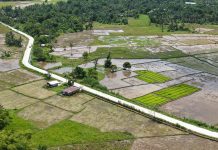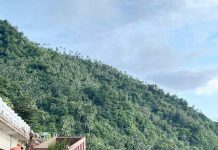TACLOBAN CITY—With the economy of the region, as measured by the Gross Regional Domestic Product (GRDP) slowed down from 12.4 percent in 2016 to 1.8 percent in 2017, regional economic officials remain “optimistic” that it will attain its goals of a robust economy and less poverty this year and onward.
“This growth is way below the target of 5.2 to 5.7 percent as indicated in the Eastern Visayas Regional Development Plan 2017-2022, and the lowest among 17 regions in the country,” said Bonifacio Uy, the regional director of National Economic and Development Authority (NEDA), in a prepared speech delivered by his assistant director Meylene Rosales on Thursday (April 26) over a news conference on the 2017 Performance of the Eastern Visayas Regional Economy.
The overall growth rates are taken from three major sectors, namely, agriculture, and fishing; industry, and services.
“Growth was hampered by the contraction of the industry sector at negative 1.7 percent,” the NEDA director said in his statement.
In the previous year, the industry sector posted a 19.5 percent growth.
Wilma Perante, the regional director of Philippine Statistics Authority (PSA), disclosed that the contraction in the industry sector was attributed to decline of the three subsectors: electricity, gas and water supply (EGWS) by 31 percent; construction by 21.0 percent, and mining and quarrying by 12.3 percent.
With the sluggish economic growth in the region in 2017, Daniel Ariaso Sr., deputy national statistician of the Civil Registration and Central Support Office of PSA, urged the public not to be dismayed, saying the region just need to “work harder” for its future economic growth goals.
While noting that the region’s growth depends mostly on the manufacturing subsector brought by heavy industries located at the Leyte Industrial Development Estate (LIDE)in Isabel town, the economic officials have urged for the promotion of “rural industrialization that will adopt and intensify industry clustering, and competitive and resilient industries, with more and stronger micro, small and medium enterprises (MSMEs)”, along with continued development of Public-Private Partnership projects.
According to NEDA, the proposed establishment of the Leyte Ecological Industrial Zone (LIEZ), which is in its pre-feasibility study stage, could be a start towards this goal.
Also, they urged for more tourism and investment promotion through a business-friendly environment to “attract, expand, and sustain investments.”
NEDA also hoped for the reversal of the region’s economic growth in 2017 through the “Build, Build, Build” program of President Rodrigo Duterte administration.
NEDA reported that the region has identified over 2,000 proposed priority programs and projects which will address the pressing issues in the region. (RONALD O.REYES)



